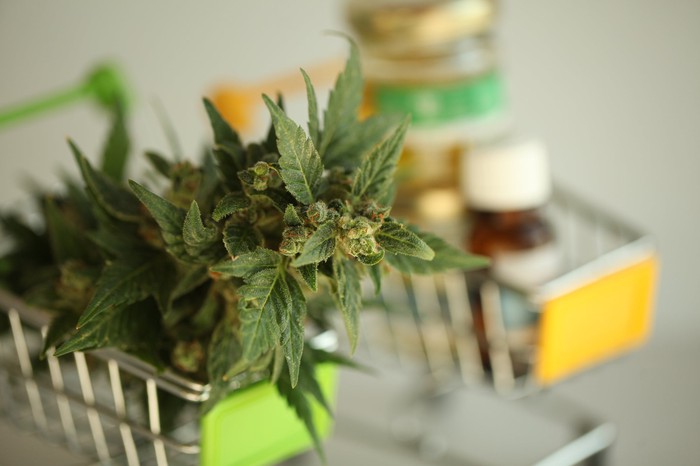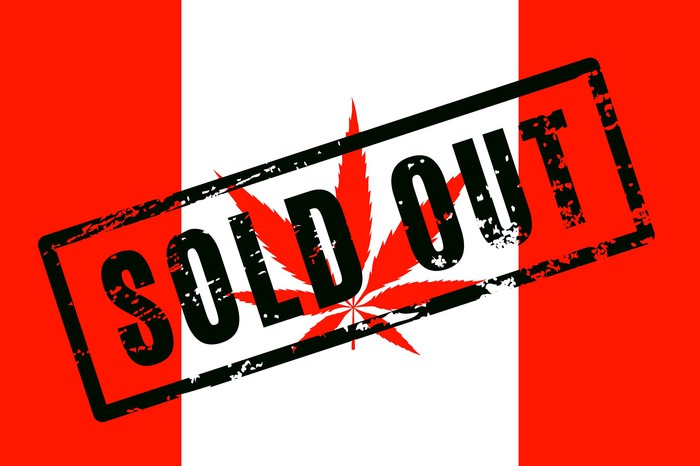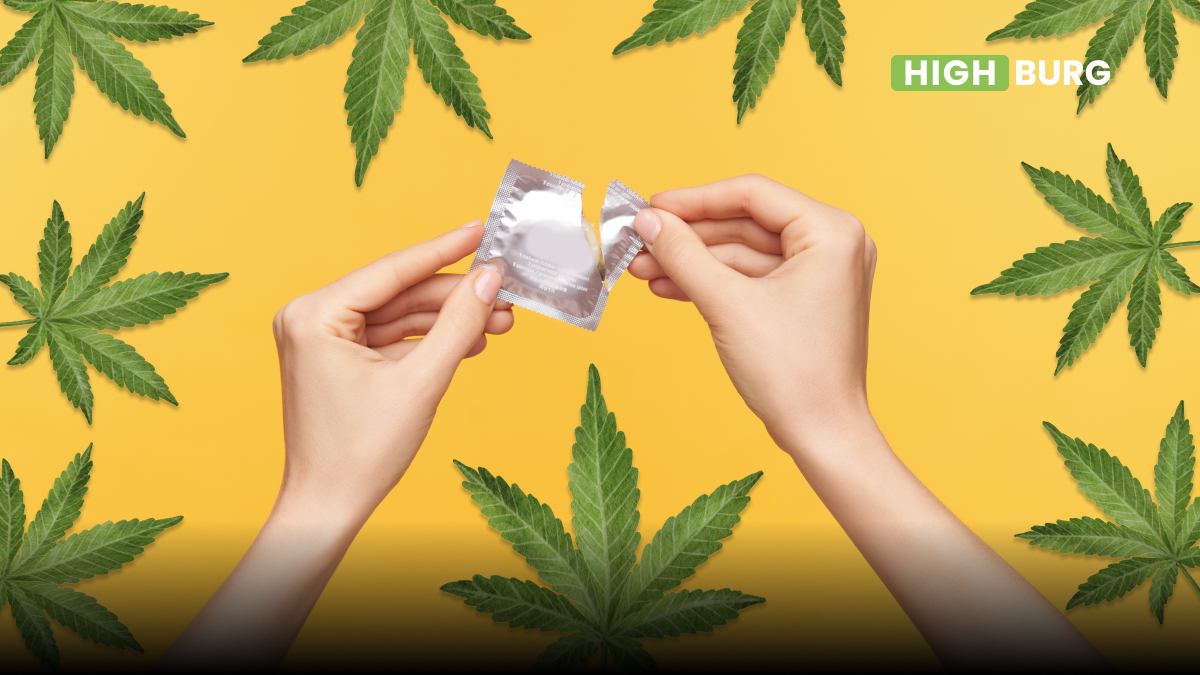All eyes are on the upcoming launch of derivatives in Canada
But over the next couple of months, all eyes are on marijuana legalization 2.0 in Canada. Our neighbor to the north officially launched adult-use weed sales on Oct. 17, 2018, making it the first industrialized country in the world to legalize recreational cannabis. Now, one year later, derivative cannabis products are readying to launch. Derivatives are nondried-flower products, such as edibles, vapes, infused beverages, concentrates, and topicals.

IMAGE SOURCE: GETTY IMAGES.
According to the timeline provided by regulatory agency Health Canada, laws governing derivative sales and production will go into effect on Oct. 17, 2019, the one-year anniversary of the recreational weed launch. However, derivative products won’t begin appearing in licensed cannabis stores until mid-December.
The excitement surrounding derivatives revolves around the fact that they’re a significantly higher margin product than traditional dried cannabis flower. In select U.S. states, for example, we’ve witnessed dried flower oversupply wreak havoc on per-gram pricing, thereby leading to lower margins for U.S.-focused growers in these states. By comparison, U.S. derivative pot products have not faced oversupply concerns or subsequent pricing pressures.
Additionally, derivatives tend to speak to a younger generation of cannabis users, who are, ultimately, the future of the global pot industry.
The upcoming derivative launch has also inspired brand-name companies to sink their teeth into the cannabis industry. Beer, wine, and spirits giant Constellation Brands sunk $4 billion into Canopy Growth in November, giving it a 37% stake in the company, while tobacco behemoth Altria sent $1.8 billion to Cronos Group (NASDAQ:CRON) in exchange for a 45% stake in the company. The former is liable to work on a line of nonalcoholic infused cannabis products, while the latter should have a diverse line of cannabis vape offerings.

IMAGE SOURCE: GETTY IMAGES.
The biggest risk: History will repeat itself
On the surface, this looks like the perfect growth storm for the Canadian marijuana industry. However, marijuana legalization 2.0 is not without its risks.
One of the more front-and-center risks that’s been garnering a lot of headlines of late are growing health concerns surrounding vaping — at least in the United States. As of this past Monday, more than 450 cases of vaping-related lung illnesses, resulting in five deaths, had been reported in 33 states. Though it’s far too early to determine the cause of these lung illnesses, there are clear concerns that vaping may not be as safe as advertised. This is worrisome given that vaping projects as the leading source of derivative cannabis sales.
But this health scare isn’t the biggest risk facing the upcoming derivative launch. Rather, it’s the possibility that history could repeat itself on the supply front, leading to the same headaches that growers have been dealing with over the past year.
Persistent supply issues have plagued Canada since October
As some of you may recall, there have been persistent supply issues with dried cannabis since its launch on Oct. 17, 2018. These supply concerns have manifested in three ways.
First, Health Canada has been absolutely overwhelmed with cultivation, processing, and sales license applications. It began the year with more than 800 applications on its desk for review, which has kept growers waiting many months, if not more than a year, for licensing approval. Select provinces have also been slow to approve licenses for physical cannabis stores. Combined, this application slowdown has kept marijuana off dispensary shelves despite strong consumer demand.

IMAGE SOURCE: GETTY IMAGES.
Secondly, pot stocks have been contending with compliant packaging solution shortages. Without enough packaging for finished product, unprocessed flower has been stuck in limbo.
Third and finally, growers waited until they were certain that the Cannabis Act would be signed into law before spending tens or hundreds of millions of dollars on capacity expansion. While financially a prudent move, the combination of a slow license application process from Health Canada, and the need to construct large grow facilities, has meant that many growers are still scrambling to complete their projects.
Cannabis legalization 2.0 will likely face these same challenges.
Supply issues are likely to manifest, again, when derivatives launch in three months
The good news is that many of Canada’s supply issues are being tackled.
Health Canada, for instance, announced a few months back that it would change its cultivation application process to reduce its backlog and, hopefully, expedite reviews. Previously, growers were free to submit cultivation applications well in advance of completing their grow site. In some instances, this meant Health Canada not being able to review a growing facility to ensure regulatory compliance. With the new regulations now in place, Health Canada will require growers to have their production facility complete prior to submitting their cultivation license application. This should remove underfunded growers from the equation, as well as help move along the review process.
We’ve also witnessed a rise in capacity for third-party extraction-services providers. In the extraction space, MediPharm Labs (OTC:MEDIF) and Valens GroWorks (OTC:VGWCF) are in the process of building out capacity to 500,000 and 1 million kilos of respective run-rate processing of hemp and cannabis biomass per year. MediPharm landed a contract to extract concentrates for Cronos Group that could be worth up to $60 million, while Valens netted aggregate extraction deals with Tilray and HEXO for at least 120,000 and 80,000 kilos, respectively, over a two-year period.

IMAGE SOURCE: GETTY IMAGES.
But the problem is that neither of these solutions provides an immediate supply fix, which is sort of what’s needed with alternative consumption options. It’s still going to take multiple quarters for Health Canada to work through its extensive backlog of licensing applications. And both MediPharm and Valens are in the process of expanding capacity (i.e., they’re not operating at peak processing capacity as of yet). This has all the hallmarks of the same supply issues that affected dried flower when it was launched last year.
The biggest impact of a slow-step launch might be felt with brand-name, derivative-focused companies. The aforementioned Cronos Group, for example, isn’t considered a top-10 producer, but is attempting to be a major derivatives company. Cronos aims to produce targeted cannabinoids at commercial scale and, as noted, should be a sizable player in the vape space. But if supply issues persist, Cronos Group’s operating results, which have arguably lagged its peers, could be noticeably disappointing.
Over the long run, derivatives should be a major margin driver for the cannabis industry. But the upcoming launch could wind up disappointing a lot of excited investors.


